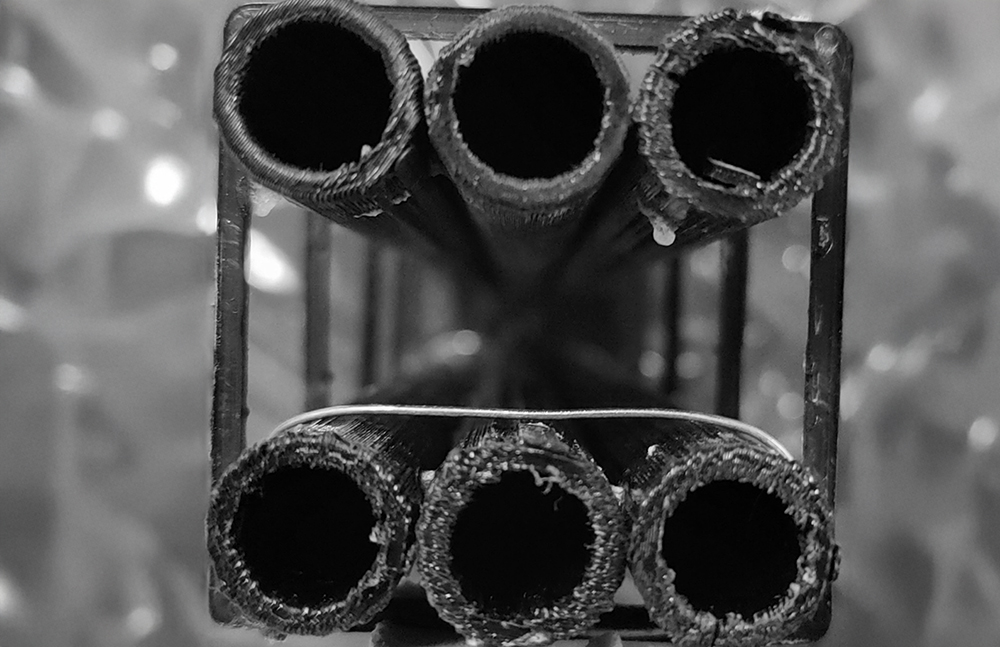 A cross-sectio of hollow rebar.
A cross-sectio of hollow rebar.
Drexel University researchers have developed a new approach to reinforce
concrete that takes inspiration from nature, specifically the hollow
structures found in plant stems. The research, recently published in the
Journal of Building Engineering, demonstrates significant
improvements in concrete's strength, toughness and ductility compared to
traditional reinforcement methods.
Traditional concrete reinforcement relies on solid steel bars (rebar) placed
within the concrete to provide tensile strength. The team, led by
Amir Farnam, PhD, associate professor of civil, architectural and environmental engineering,
and post-doctoral researcher Parsa Namakiaraghi, PhD, instead used
3D-printed hollow polymer tubes arranged in patterns that mirror natural
structures.
"Over millions of years of evolution, living organisms have developed
specific architectural elements with unique geometries, such as hollow
structures in plants, to enhance the mechanical properties of their
structures,” explains Namakiaraghi. "Plant stems need to be both strong and
flexible to survive the bending forces induced by natural elements such as
wind, and they achieve this through hollow, tubular structures which also
act as vessels for transporting water and nutrients. We've shown that we can
apply similar principles to improve construction materials."
The team developed what they call Engineered Polymeric Reinforced
Cementitious composite (EPRC), using sophisticated computer modeling to
predict performance before validating their designs through mechanical
testing. They created the reinforcement structures using 3D printing
technology, which allowed them to precisely control the geometry and
arrangement of the hollow tubes.
The hollow design proved superior to solid reinforcement in multiple ways.
Beyond the structural advantages of the tubular shape, the increased surface
area of the hollow tubes created stronger bonding with the surrounding
concrete. This enhanced the interface properties, combined with the tubes'
ability to better distribute forces, helped prevent the formation of cracks
and improved overall durability. Their results showed remarkable
improvements: concrete reinforced with hollow tubes demonstrated a 34%
increase in ductility, 93% increase in toughness, and 55% increase in
strength compared to identical samples reinforced with solid bars of the
same material.
"We were particularly impressed by the improvement in toughness - the
ability to absorb energy without rupture," says Farnam. "Traditional
reinforced concrete can be quite brittle, but our bio-inspired design allows
for more controlled deformation under stress, which is crucial for
structural safety."
The work was supported by the PA Manufacturing Innovation Program,
highlighting Pennsylvania's commitment to advancing construction technology
through additive manufacturing. The use of 3D printing not only enabled the
research but also points to potential future applications in construction.
Looking ahead, the team plans to explore scaling up the technology for
practical construction applications. They're also investigating different
materials and geometries that could further improve performance. The
research has implications beyond buildings - the principles could be applied
to infrastructure like bridges and roads, where improved durability and
crack resistance are especially valuable.
"This research demonstrates how we can create better performing materials by
learning from nature's time-tested solutions," adds Farnam. "As we continue
to develop this technology, we're excited about its potential to make our
built environment stronger, safer, and more sustainable."